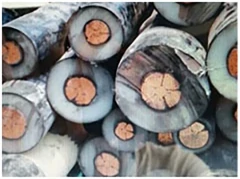A granulator, a critical component in the manufacturing and recycling industries, plays a pivotal role by converting large materials into smaller, more manageable pieces. Its operation is fundamental to processes that require size reduction of materials such as plastics, pharmaceuticals, and foodstuffs. Understanding how a granulator works not only enhances one's technical knowledge but also sheds light on the complexities and precision involved in material processing.

At its core, a granulator operates through a mechanical process that involves cutting, shredding, and granulating. This begins with the material being fed into the machine’s hopper, often equipped with safety features to prevent accidents during operation. As gravity directs the material downwards, it enters the cutting chamber, which is the heart of the granulation process.
Inside the cutting chamber, rotating blades work in tandem with stationary knives. The precision-engineered blades, typically made of hardened steel, execute a scissor-like action, efficiently slicing through the material. This design ensures a consistent output size, critical for standardizing subsequent processing or recycling efforts. Adjustments to the blade's speed and gap are made based on the material's hardness and desired granule size, showcasing the machine’s versatility.

The rotor, a crucial component, further enhances the process. It spins at high speeds to facilitate the cutting action, while multiple configurations such as open or staggered rotors determine the granulator’s efficiency and effectiveness. Rotors can be tailored to specific material properties, ensuring optimal performance across various applications. For example, in plastics recycling, the rotor design is crucial for ensuring the integrity of the granules for future reprocessing.
One cannot overlook the importance of the screen located beneath the cutting chamber. This screen dictates the granule size that exits the machine, trapping any material larger than the specified size. The choice of screen size directly affects the uniformity and application of the granulated material, making it a key variable in the process.
how does a granulator work
An often-underappreciated aspect is the granulator’s ability to mitigate heat generation. As the mechanical action can generate significant heat, especially with tough materials, many granulators are equipped with cooling systems or designs that minimize temperature rise, thereby preventing material degradation. This feature is particularly vital in industries like pharmaceuticals, where material integrity is paramount.
Noise and dust management are also critical, especially in environments prioritizing health and safety. Modern granulators often come with sound-proofing enclosures and dust extraction systems, ensuring compliance with environmental regulations and enhancing workplace safety.
The maintenance of a granulator cannot be overstated as it directly impacts performance and longevity. Regular inspections of blades, screens, and other wear parts are necessary to maintain precision and efficiency. Replacement of worn parts ensures the granulator operates at peak efficiency, minimizing downtime and costs associated with material waste or machine failure.
In the world of manufacturing and recycling,
the granulator's role is indispensable. Its ability to transform unmanageable waste into valuable resources exemplifies the innovation and engineering prowess that characterizes modern industrial processes. By maintaining a focus on precision and efficiency, granulators remain at the forefront of material processing technology, adapting to new materials and evolving industry demands. Whether optimizing a production line or enhancing recycling capabilities, the granulator stands as a testament to the engineering ingenuity that fuels contemporary industry.


